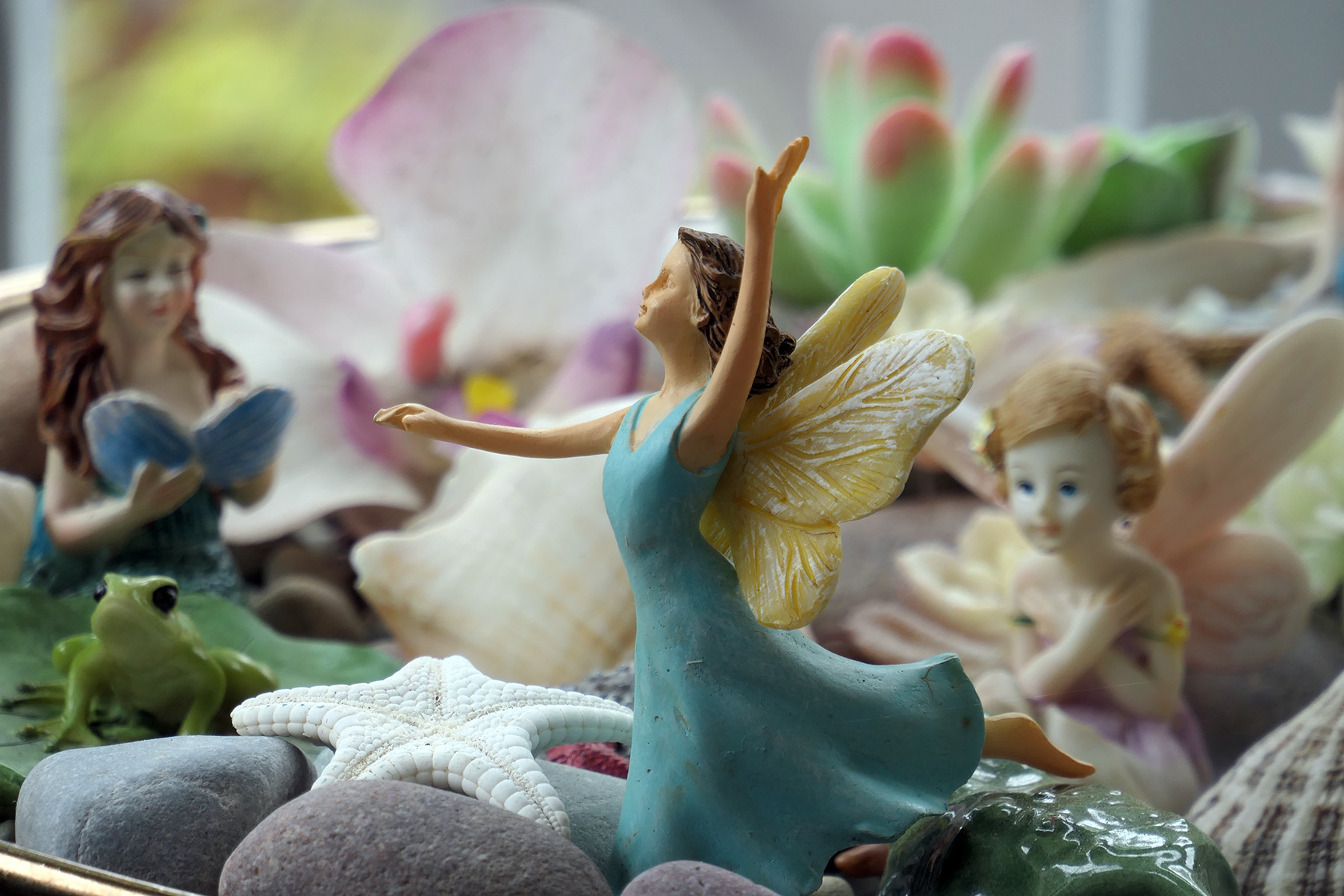There are days where magic needs to come to the rescue. Luckily for me, all I have to do is visit a friend’s house in SE Portland and choose between two kinds of otherworldly delights: her homestyle Italian cooking, handed down through the generations of her family, or her fairy garden. Either one is guaranteed to pull me back from the brink of depression.

I love fairy gardens, unabashedly so. The whimsey in their construction appeals to me and the enchantment they bring to the kids of the neighborhood, or the part of my soul that preserved some childlike longings, is a sight to behold.

This particular garden runs the length of the property, nestled in a carefully planted stone garden wall that borders the sidewalk. Kids can walk right up to the displays – and they do, rearranging and playing, eager to go on their walks if this is the destination. By the evening, my friend has her own time to play, inspecting the configurations and changing what needs changing. Double joy. During the years not a bit has been stolen or destroyed, quite a feat.



Fairies are generally associated with the British Isles.The oldest fairies on record in England were first described by the historian Gervase of Tilbury in the 13th century. They come in hundreds of configurations, some benign, some not, some luring you to your death in the moors, some helping you with household chores – but they all have a knack to appear an disappear at will, untraceable.



Flower fairies, the gossamer, wing-bedecked beauties that many of us think of when fairies are mentioned, were the creation of Cicely Mary Barker. First she illustrated a series of postcards in 1918, now desirable collector items. Her books, published in 1923, contained botanical accurate drawings of some 170 flowers, accompanied by her sweet inventions. It charmed the children (and adults alike) while simultaneously conveying knowledge about flowers essential to the art of English gardening. Museums now devote exhibitions to the work.


One of the many proud moments of my own parenting history concerned my then 6-year old boy’s discovery and passion for those books during a sabbatical that our family spent in Cambridge, England. He never let go, even when teased in stupid gender-stereotyping ways, and I am happy to report that he has become an avid gardener now as a grown-up.



Miniature gardening – which eventually became home to the display of little creatures – has a long history, really across continents, just think of Japan’s Bonsai culture. In Europe, it was engineer, gardener and author Annette Ashbury who in the 1950’s decided to offer miniature gardens to people who had lost their ability to garden on a large scale due to age or disability. She thought working with containers on table tops or other elevated surface would help ease the burdens. Quite a remarkable woman of German-Jewish descent whose parents had emigrated to England. (If you have time, read the short bio in the link above – she is another one of those stunning accomplished women nobody knows about.)
Her book Miniature Gardens was an instant classic. These days whole societies are devoted to the creation of these tiny living tableaus. And the boom in interest both here an in the U.K. has led to huge commercialization of the props, selling at a brisk pace in specialized fairy garden departments of nurseries and specialty shops.



Here is a list or public fairs gardens for the next trip to the U.K., should we ever travel again. They’ve become, alas, quite industrial.
I’d rather stay with the layperson’s version, like the one on SE Rural St., and remain ignorant of the sources of delight, with intact fantasies of fairies and accoutrements appearing out of nowhere. Magic it shall be.

And we might extend our unabashed inclination towards fairytales to the music today as well. Prokofiev’s Cinderella Suite has multiple fairies summoned by the fairy godmother.
